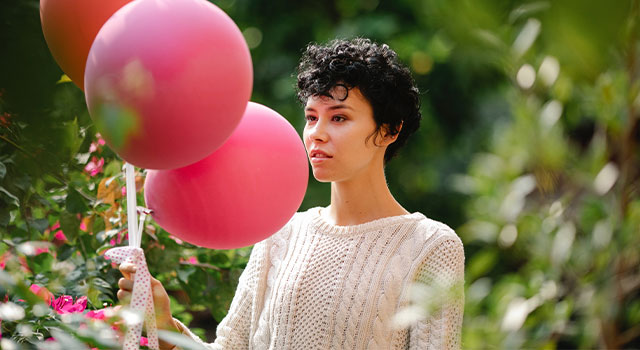 Finding a lump on your eyelid can be scary, but it doesn’t have to be. Luckily, a chalazion isn’t a serious condition and is rather simple to resolve.
Finding a lump on your eyelid can be scary, but it doesn’t have to be. Luckily, a chalazion isn’t a serious condition and is rather simple to resolve.
In most cases, a chalazion can easily be treated and will completely disappear following treatment. However, if non-invasive treatments don’t work, your eye doctor may need to remove it through an in-office surgical procedure.
At The Dry Eye Center At Eye Trends we can diagnose and help treat your chalazion so that you can see comfortably.
What is a Chalazion?
A chalazion, also known as a meibomian cyst, is a small fluid-filled cyst.
Eyelids contain meibomian glands, which produce oil to lubricate the surface of the eye. When one of these glands becomes blocked, it may cause swelling and lead to a small painless lump called a chalazion.
What Causes a Chalazion?
A chalazion occurs when the gland in the eyelid is clogged. Exactly why the gland becomes clogged isn’t known, but some individuals appear to be more susceptible to developing a chalazion than others.
A chalazion may be associated with dry eye syndrome, which is often caused by meibomian gland dysfunction.
People exhibiting certain risk factors are more likely to develop a chalazion. This includes people who have:
- Blepharitis, an inflammation of the eyelids
- Conjunctivitis, also known as pink eye
- Thicker oil or meibum than normal consistency
- Ocular rosacea, a skin condition adjacent to the eyes
- Seborrhea, or dandruff, of the eyelashes
- Styes or a history of styes
What Are the Symptoms of a Chalazion?
Common symptoms of a chalazion include:
- A bump on the eyelid that sometimes becomes swollen and red
- An entirely swollen eyelid, although very rare
- Vision issues (such as blurred vision) if the chalazion becomes large enough to press on the eyeball
While a chalazion is not an infection, it may become infected. In the rare event that this occurs, it may become red, more severely swollen, and painful.
Chalazia are often mistaken for styes since they have a similar appearance.
What’s the Difference Between a Chalazion and a Stye?
It can be difficult to differentiate a chalazion from a stye.
Styes develop along the edge of your eyelid and can at times be seen at the base of an eyelash. In contrast, chalazia usually occur closer to the middle of the eyelid. A stye is more likely to be painful and tends to have a yellowish spot at the center that may burst after a few days.
Basically, the most noticeable difference between a chalazion and a stye is that a chalazion tends to be painless while a stye is usually painful and may cause the eye to feel sore, itchy or scratchy.
How to Treat a Chalazion
Most chalazia require minimal medical treatment and some may even clear up on their own in a few weeks to a month. When a chalazion first appears, you can try doing the following for 1-2 days:
- Apply a warm compress to the eyelid for 10 to 15 minutes, 4 to 6 times a day. The warm compress helps soften the hardened oil that blocks the ducts, allowing drainage and healing.
- Gently massage the external eyelids for several minutes each day to help promote drainage.
If the chalazion does not drain and heal within a few days, contact your eye doctor. Don’t attempt to squeeze or pop the chalazion, as it may inadvertently cause more damage.
To learn more about chalazion treatment and the other eye care services we offer, call The Dry Eye Center At Eye Trends to schedule an appointment.
The Dry Eye Center At Eye Trends serves patients from Houston, Spring, Woodlands, and Conroe, Texas and surrounding communities.
Q: Can a chalazion spread from one person to another?
- A: Since a chalazion is not an infection, it cannot spread from one person to another or even to the other eye of the affected person.
Q: Can a chalazion affect my eyesight?
- A: A chalazion doesn’t affect vision. In rare cases, if the lump is large enough to distort the ocular surface it can cause temporary astigmatism, blurring vision. However, vision will return to normal once a medical professional removes the chalazion or once it diminishes in size.
